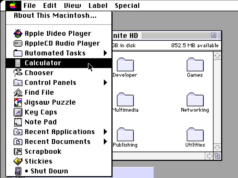
Baking homemade bread can be extremely satisfying, but the long time commitment is a big turn off for some folks. It takes hours to make a loaf of bread, partially because the proofing can’t be rushed. While bakeries and some home kitchens come equipped with proofing drawers to regulate temperature and speed up this process, most homes don’t. Fortunately, there’s a work around. Instead of waiting until dawn for your dough to “double in size,” proof your dough with a mug warmer.
I started using a cheap mug warmer years ago, when I became obsessed with pour-over coffee. (It is superior to drip in my well-caffeinated opinion.) The bummer with a big batch of pour-over is that my glass carafe loses heat quickly. Enter the mug warmer. Its highest setting keeps my carafe at the perfect temperature, and it even has two weaker settings for the weirdos that like tepid coffee. It’s done this task well for me, and I never thought of it as anything else.
After perusing Instagram one day, I saw a “dough riser.” Odd how it looked just like my mug warmer. Well, that’s because it basically is. After proofing cold-weather loaves painstakingly for years, the answer has been right in front of me this whole time. This $20 pad that sustains a low temperature for hours is perfect for proofing bread.
When you’re not warming coffee consider proofing dough with one of theses:
How to set up your “proofing machine”

Credit: Allie Chanthorn Reinmann
Many of these small brand mug warmers have two or three different temperature settings. Yeast thrives around 80°F to 90°F, so the closer we can get to that, the better. Coffee warmers, even at their lowest setting, are aiming to be hotter than this because 85°F coffee will feel slightly cool to your 98°F mouth. I used a surface thermometer to measure the lowest setting on my mug warmer, which was 169°F. According to Bob’s Red Mill, yeast start to die off around 120°F, and really can’t make it at 140°F. The low setting on my warmer is still too hot.
But that’s nothing I can’t work around; I just had to dampen the direct heat. I could have used a towel or an oven mitt, but I wanted something easy and consistent. I grabbed a small plate instead. The foot of the plate fit well on the mug warmer and even lifted it slightly, creating some distance. I let this plate heat up for about five minutes before I took a temperature reading of the surface: 88°F. Perfect.
If you don’t have an infrared thermometer to read the surface, you can use your hand. After your plate heats up for a few minutes, touch the center. It should feel pleasantly warm, like the temperature of folding warm laundry. Yeast likes to be cozy just like we do. If it’s too hot to keep your finger on then you might need a thicker plate, or put a folded tea towel or pot holder on the plate to create a better buffer.
How it worked

Credit: Allie Chanthorn Reinmann
To see if it would actually work, I experimented with two balls of dough. I made a simple batch of white bread and split the dough in half equally. I put dough A on my 88°F plate-dampened mug warmer, and left dough B to proof on the countertop next to it. The countertop temperature clocked in at 68°F.

Credit: Allie Chanthorn Reinmann
After one hour I barely noticed a difference between the two, but after two hours (typical proofing time listed in most recipes) the yeast activity was different by a long shot. The lighting makes it a little hard to see but if you look carefully at the picture, you can see dough A had doubled in size and the bubbles underneath were plentiful and larger than in dough B. I shaped up dough A to get ready for baking, and left dough B to continue proofing.
Most bread recipes actually have two proofing periods: the first one before shaping, and the second proof before baking. While it’s true that this mug warmer hack only addresses the first proof, I’d argue that getting this one right is the most important. It’s the longest, most tedious, and it’s where the yeast builds momentum. If your first proof is successful and the yeast are thriving, the second proof is more likely to be short and sweet, around 45 minutes. Still, I wouldn’t leave you without a solution for your second proof. The second proof is usually when you start preheating the oven, so you’ll have an acceptable proofing station right there. Cover your bread with a clean tea towel and leave it right over your toasty warm stove.








